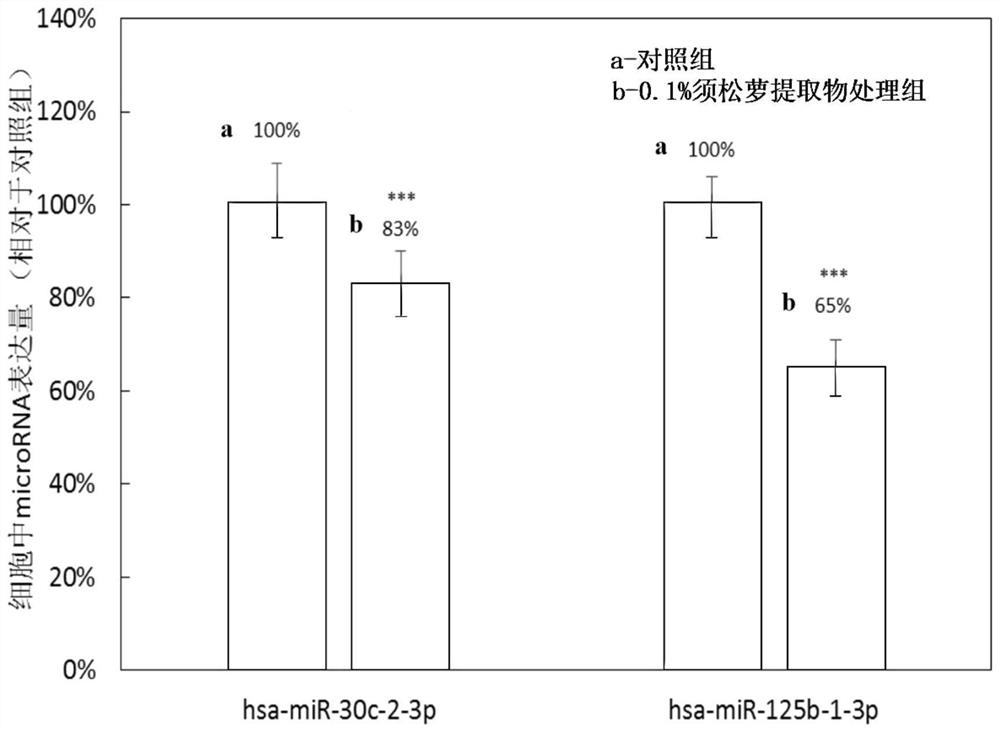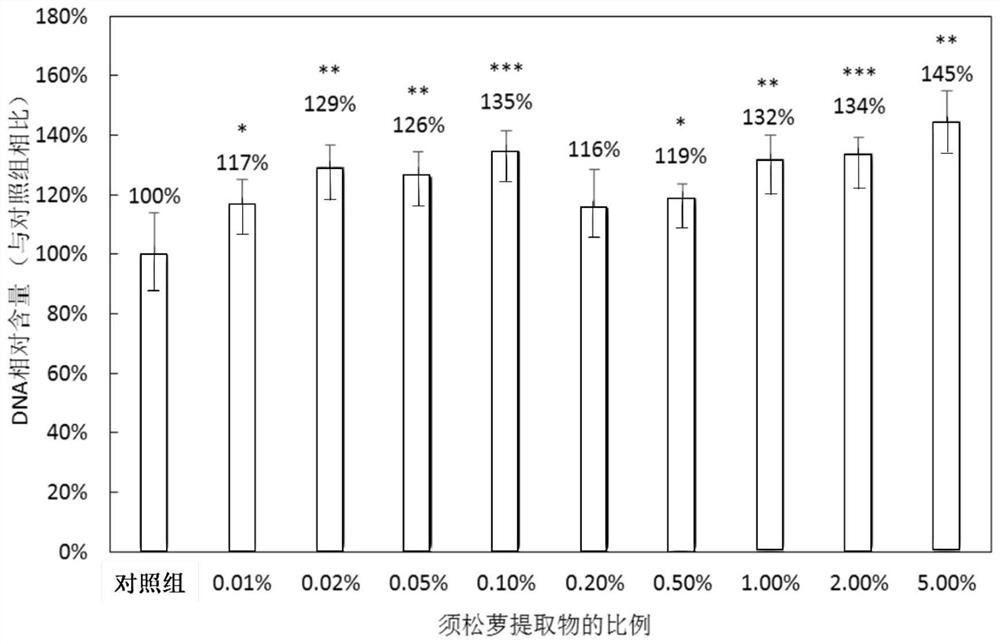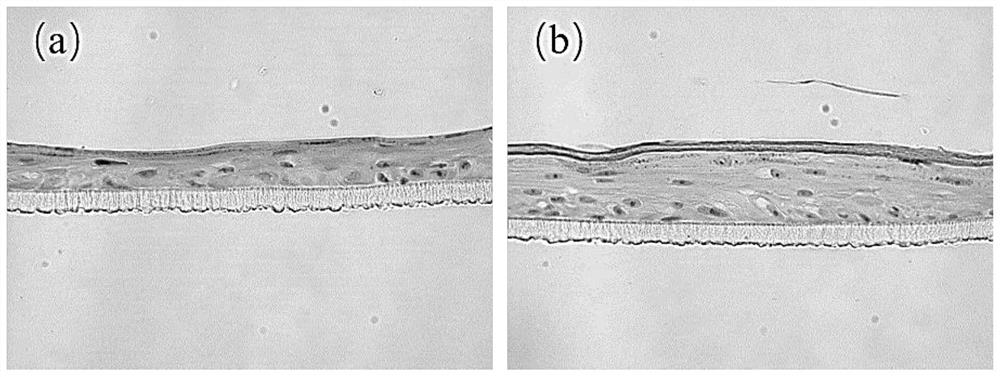Usnea barbata extract, application thereof and skin external preparation containing same
A technology of skin external preparations and extracts, applied in the field of skin external preparations, to achieve the effect of strengthening the human epidermal barrier, reducing loss, and improving structure
- Summary
- Abstract
- Description
- Claims
- Application Information
AI Technical Summary
Problems solved by technology
Method used
Image
Examples
Embodiment 1
[0078] The preparation of embodiment 1 Usnea tobea extract
[0079] (1) Mixing the dried Usnea barbata powder and distilled water to obtain a mixture; wherein the mass ratio of the dried Usnea barbata powder to the distilled water is 0.5:5.
[0080](2) Add 10 mM tetrasodium edetate to the mixture in step (1), adjust the pH value to 10.5-11, and heat at 55° C. for 2 hours to obtain the mixture;
[0081] (3) Centrifuge the mixture of step (2) at 4000 g for 10 min to remove solid matter to obtain a crude Usnea barbata extract solution; check the pH value, if it is not 6-6.5, adjust the pH value to 6-6.5; Then dilute the Usnea barbadensis crude extract solution;
[0082] Purify the diluted Usnea barbata crude extract solution, and filter continuously with a filter with decreasing porosity to clarify the Usnea barbata crude extract solution, and finally filter and sterilize the Usnea barbata crude extract solution with a porosity of 0.2 μm; For the dill extract, the pH value of t...
Embodiment 2
[0084] Embodiment 2 tests the content of each component in the Usnea tobeta extract
[0085] The specific method is as follows:
[0086] The total sugar content of the extracts was determined by a modification of the assay protocol described by Dubois et al. (M. Dubois et al. 1956. Anal. Chem. 28:350-356). The assay involves dissolving the raw material in concentrated sulfuric acid and reacting it with phenol to form dye complexes. The absorbance of the complex was read at 490 nm in a spectrophotometer. Sugar content was determined using a glucose standard curve.
[0087] The amino acid content of the extract was determined by the protocol published by Moore et al. (MOORE S et al. J Biol Chem. 1948 Oct; 176(1):367-88.), the free amino acid content of the extract was determined by using ninhydrin reagent to destroy amine Estimated by the formation of dye complexes after the base and carboxyl functional groups. The absorbance of the complex was read on a spectrophotometer at...
Embodiment 3
[0091] Embodiment 3 contains the lotion of Usnea barbadensis extract
[0092] According to the following components and dosage, the lotion is prepared, and the percentage refers to the weight percentage of each component in the lotion:
[0093] Glycerin 5%, polyols A 3-6%, betaine 1%, panthenol 0.5%, dipotassium glycyrrhizinate 0.05-0.1%, polyethylene glycol-32 0.5%, surfactant A 0.15-0.2%, 0.4-0.45% of preservative A, 0-0.15% of xanthan gum, 0.03% of perfume and the extract of Usnea barbata, the rest is deionized water, and the weight percentage sum of the above components is 100%.
[0094] Wherein, the percentage by weight of the Usnea barbadensis extract is 1%.
[0095] Polyols B are butanediol and 1,3-propanediol. Surfactant B is polyglyceryl-2 oleate and polyglyceryl-10 oleate. Preservatives B are propylparaben, methylparaben and phenoxyethanol. Acrylic resin Pemulen TR-2 is an acrylic (ester) / C10-30 alkanol acrylate crosspolymer. Xanthan gum is an extracellular mi...
PUM
 Login to View More
Login to View More Abstract
Description
Claims
Application Information
 Login to View More
Login to View More - R&D
- Intellectual Property
- Life Sciences
- Materials
- Tech Scout
- Unparalleled Data Quality
- Higher Quality Content
- 60% Fewer Hallucinations
Browse by: Latest US Patents, China's latest patents, Technical Efficacy Thesaurus, Application Domain, Technology Topic, Popular Technical Reports.
© 2025 PatSnap. All rights reserved.Legal|Privacy policy|Modern Slavery Act Transparency Statement|Sitemap|About US| Contact US: help@patsnap.com



